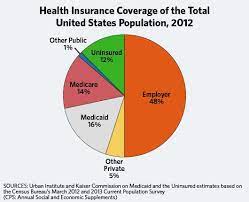
Introduction
In the fast-paced and unpredictable journey of life, the need for financial security cannot be overstated. Term life insurance stands out as a reliable solution to provide that crucial safety net for your loved ones. This article aims to delve into the intricacies of term life insurance quotes, unraveling the key aspects that make them an essential consideration for individuals seeking robust financial protection.
Understanding Term Life Insurance
Term life insurance is a straightforward and cost-effective form of life insurance that provides coverage for a specified period, known as the “term.” Unlike whole life insurance, which covers the insured’s entire lifetime, term life insurance focuses on a predetermined timeframe, making it an ideal choice for those looking for affordable and temporary protection.
The Basics of Term Life Insurance Quotes
When considering term life insurance, obtaining quotes becomes a pivotal step in the decision-making process. Term life insurance quotes are estimates of the premiums you’ll pay for coverage based on factors such as age, health, coverage amount, and the chosen term length. These quotes serve as a foundation for making informed decisions regarding the most suitable policy for your unique needs.
Factors Influencing Term Life Insurance Quotes
- Age: Age is a critical determinant of term life insurance premiums. Generally, younger individuals are quoted lower premiums, as they are considered lower-risk policyholders.
- Health Status: Your overall health significantly impacts the cost of term life insurance. Insurers assess factors such as medical history, lifestyle choices, and pre-existing conditions to determine the level of risk associated with insuring you.
- Coverage Amount: The desired coverage amount also plays a crucial role in shaping term life insurance quotes. Higher coverage amounts naturally result in higher premiums.
- Term Length: The duration for which you seek coverage is another pivotal factor. Shorter terms typically come with lower premiums, making them an attractive option for individuals with specific, short-term financial obligations.
- Lifestyle Choices: Habits such as smoking and excessive alcohol consumption can elevate your risk profile, leading to higher term life insurance premiums.
Navigating the Options: Choosing the Right Term
Term life insurance offers a variety of term lengths to cater to different needs. Common terms include 10, 15, 20, and 30 years. The choice of term depends on your specific circumstances and financial goals.
- Short-Term Needs: Individuals with short-term financial obligations, such as paying off a mortgage or funding a child’s education, may find a 10 or 15-year term suitable.
- Family Planning: For those looking to secure their family’s financial future throughout key life stages, a 20 or 30-year term might be more appropriate.
- Affordability: Shorter terms generally translate to lower premiums. If cost is a primary consideration, a shorter term may align with your budgetary constraints.
- Convertible Policies: Some term life insurance policies offer conversion options, allowing you to convert your term policy into a permanent life insurance policy without undergoing additional medical underwriting. This can be a valuable feature if your circumstances change over time.
Comparing Quotes and Insurers
Obtaining multiple term life insurance quotes from different insurers is a prudent approach. It not only helps in understanding the competitive landscape but also ensures that you’re getting the best value for your investment. When comparing quotes, consider not only the premium amounts but also the reputation and financial stability of the insurance companies.
- Financial Strength: Opt for insurers with a strong financial standing. Rating agencies like A.M. Best, Moody’s, and Standard & Poor’s can provide insights into an insurer’s financial stability.
- Customer Reviews: Explore customer reviews and testimonials to gauge the satisfaction levels of existing policyholders. A reputable insurer should have a track record of fair dealings and prompt claims processing.
- Policy Riders and Options: Evaluate the additional options and riders offered by each insurer. Some policies come with built-in features like accelerated death benefits, which allow you to access a portion of the death benefit in case of a terminal illness.
Understanding the Fine Print
Before finalizing your decision, it’s crucial to thoroughly review the terms and conditions of the policy. Pay attention to:
- Exclusions: Familiarize yourself with any exclusions or limitations outlined in the policy. This may include certain high-risk activities or pre-existing conditions.
- Renewability: Understand the policy’s renewability provisions. Some term life insurance policies are renewable at the end of the term, while others may require a reevaluation of your health and an increase in premiums.
- Grace Period: Be aware of the grace period for premium payments. A grace period provides a buffer to make payments without the risk of policy termination.
- Cancellation Policy: Inquire about the insurer’s cancellation policy. Knowing the terms under which you can cancel the policy, if needed, is essential.
Conclusion
Term life insurance quotes serve as the gateway to securing your financial legacy. By understanding the factors that influence quotes, comparing options, and delving into the details of policies, you can make an informed decision that aligns with your goals and budget. As life unfolds with its uncertainties, a well-chosen term life insurance policy can provide the peace of mind and financial security needed to navigate the journey with confidence.






